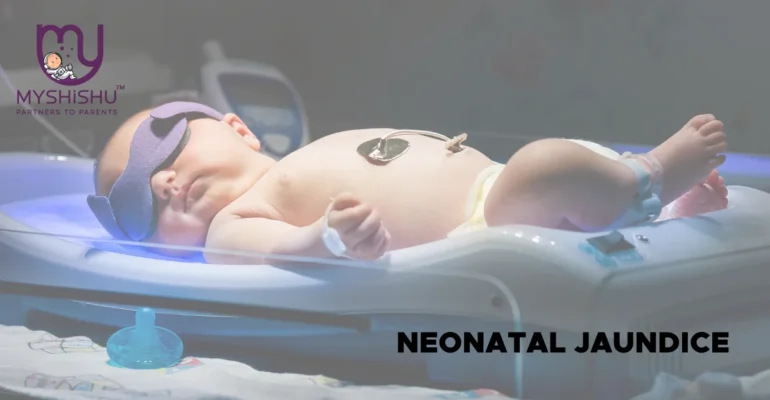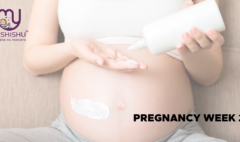Neonatal Jaundice: A Comprehensive Guide
Neonatal Jaundice: A Comprehensive Guide
Dive into the world of parenthood as we unravel the intricacies of neonatal jaundice, a common yet misunderstood condition affecting newborns. From exploring its origins in immature liver function to identifying key symptoms and risk factors, this blog sheds light on the causes and diagnostic measures for neonatal jaundice. Learn how to recognize signs early on, understand the associated risks, and discover effective management strategies. Join us on this informative journey to empower parents with knowledge, ensuring the well-being of their precious little ones in the face of this often benign yet concerning condition. Neonatal Jaundice: Navigating the Yellowing Path of Newborn Health.
Introduction
Embarking on the adventure of parenthood, it’s essential to navigate the intricacies that come with the arrival of a newborn. Neonatal jaundice, with its distinctive yellow hue, often raises concerns for parents. In this guide, we delve into the world of neonatal jaundice, demystifying its origins, symptoms, and impact on newborn health. As we unravel the science behind this common condition, we aim to empower parents with knowledge, ensuring they can recognize, understand, and effectively manage neonatal jaundice for the well-being of their precious bundle of joy. Join us on this informative journey into the realm of newborn health.
What is Neonatal Jaundice in newborns?
Neonatal jaundice is a common condition in newborns characterized by the yellow discoloration of the skin and eyes. This phenomenon occurs due to elevated levels of bilirubin, a yellow pigment produced during the breakdown of red blood cells. In the early days of life, a baby’s liver may not be fully equipped to efficiently process and excrete bilirubin, leading to its accumulation in the body.
The yellowing typically appears within two to four days after birth, peaking around the first week. While neonatal jaundice is often a normal and temporary occurrence, in some cases, excessive bilirubin levels may require medical attention. Understanding the causes, symptoms, and management of neonatal jaundice is crucial for ensuring the health and well-being of newborns.
What are the different types of neonatal jaundice?
Neonatal jaundice can manifest in various types, each with its distinct causes. Here are the main types:
- Physiological Jaundice:
- Cause: The most common type, resulting from the immature liver’s inability to efficiently process bilirubin in the early days of life.
- Timing: Appears after the first 24 hours, peaks around the third to the fourth day, and resolves within a week or two.
- Breast Milk Jaundice:
- Cause: Linked to substances in breast milk that can hinder bilirubin elimination.
- Timing: This typically emerges after the first week and may persist for several weeks.
- Breastfeeding Jaundice:
- Cause: Inadequate breastfeeding leads to insufficient intake, causing dehydration and elevated bilirubin levels.
- Timing: Usually occurs within the first few days.
- Blood Group Incompatibility Jaundice (Rh or ABO incompatibility):
- Cause: Mismatch between the blood types of the mother and baby, leading to an increased breakdown of red blood cells.
- Timing: This can occur within the first 24 hours.
- Infections-Related Jaundice:
- Cause: Infections such as sepsis can contribute to elevated bilirubin levels.
- Timing: This can occur at any time during the neonatal period.
- Hemolytic Jaundice:
- Cause: excessive breakdown of red blood cells, often due to inherited conditions like G6PD deficiency.
- Timing: Varies based on the underlying cause.
Understanding the specific type of neonatal jaundice is crucial for determining appropriate management and ensuring the best possible outcomes for the newborn. If jaundice persists or appears severe, consulting with a healthcare professional is advisable for proper evaluation and intervention.
How common is jaundice in newborns?
Jaundice is a common occurrence in newborns, affecting approximately 60% of full-term infants and 80% of preterm babies. Most cases are physiological, resolving on their own within a week or two. While common, monitoring and, if necessary, medical intervention ensure the well-being of the newborn.
Signs and symptoms
Recognizing the signs and symptoms of neonatal jaundice is paramount for parents to ensure the well-being of their newborn. The primary indicator is the yellow discoloration of the skin and eyes, known as jaundice. Beyond this visible cue, it’s essential to be vigilant for other associated symptoms that may manifest:
- Yellowing of the Skin and Eyes:
- Appearance: The yellow hue is initially noticeable on the face, especially around the eyes, and gradually spreads to other body parts.
- Changes in Stool Color:
- Description: The stool may appear pale or chalky instead of the typical yellowish color, indicating altered bilirubin processing.
- Changes in Urine Color:
- Description: Darker urine than usual, often with a deeper yellow color, reflecting elevated bilirubin levels.
- Poor Feeding:
- Behavior: Lethargy, reluctance to feed, or decreased feeding duration may be observed, impacting the newborn’s nutritional intake.
- Unusual Sleepiness:
- Behavior: Excessive sleepiness or difficulty waking for feedings may signal the need for attention.
- High-Pitched Crying:
- Sound: A high-pitched, moaning cry may accompany jaundice-related discomfort or distress.
- Arching of the Body:
- Posture: Arching of the back, often accompanied by irritability, can be indicative of jaundice-related discomfort.
It’s crucial to note that while physiological jaundice is common, appearing after the first 24 hours and peaking around the third to fourth day before gradually resolving, any deviation from this pattern or the presence of severe symptoms warrants immediate attention. Consulting with a healthcare professional ensures a thorough assessment and appropriate management, contributing to positive outcomes for newborns with jaundice. Early detection and intervention play a pivotal role in ensuring the health and happiness of the newest members of the family.

What causes jaundice in newborns?
Neonatal jaundice, the yellow discoloration of a newborn’s skin and eyes, stems from elevated levels of bilirubin in the bloodstream. Bilirubin is a yellow pigment produced during the natural breakdown of red blood cells. While this process is part of the normal life cycle of red blood cells, a newborn’s immature liver may face challenges in efficiently processing and excreting bilirubin, leading to its accumulation in the body.
- Physiological Factors: The most common cause of neonatal jaundice is physiological jaundice, attributed to the temporary inefficiency of a newborn’s liver. The liver, responsible for processing bilirubin, takes time to adapt to the postnatal environment. This type of jaundice typically appears after the first 24 hours, peaks around the third to the fourth day, and then gradually diminishes as the baby’s liver matures.
- Breast Milk Composition: Breast Milk Jaundice is another contributor, linked to substances in breast milk that can inhibit bilirubin elimination. Unlike physiological jaundice, this type may persist beyond the first week of life. Healthcare professionals must distinguish between breast milk jaundice and other types to ensure appropriate management.
- Blood Group Incompatibility: Neonatal jaundice can also result from blood group incompatibility between the mother and baby, either due to ABO or Rh differences. In these cases, the mother’s antibodies may attack the baby’s red blood cells, leading to increased bilirubin production.
- Prematurity: Preterm infants may experience jaundice due to an underdeveloped liver, coupled with a higher likelihood of increased red blood cell breakdown. Monitoring bilirubin levels is crucial to managing jaundice in premature babies.
- Genetic Factors: Hemolytic jaundice, caused by excessive breakdown of red blood cells, may have a genetic basis, such as conditions like G6PD deficiency. Genetic factors influencing the rate of red blood cell breakdown can contribute to elevated bilirubin levels.
Understanding these diverse causes of neonatal jaundice is vital for healthcare professionals to tailor appropriate interventions. While most cases of jaundice are benign and resolve on their own, identifying and addressing underlying factors ensures the best possible outcomes for newborns. Monitoring bilirubin levels and considering individual circumstances contribute to effective management and the overall well-being of the newborn.
Diagnosis and tests
Diagnosing neonatal jaundice involves a combination of clinical evaluation and specific tests to determine the severity of the condition and guide appropriate interventions. Healthcare professionals employ various diagnostic measures to assess bilirubin levels and identify the underlying causes. Here’s an overview of the diagnosis and tests associated with Neonatal Jaundice:
- Clinical Examination:
- Observation: The primary method involves visually inspecting the newborn for the characteristic yellowing of the skin and eyes.
- Assessment of Associated Symptoms: Healthcare professionals also assess additional symptoms such as poor feeding, changes in stool color, and unusual sleepiness.
- Bilirubin Tests:
- Total Serum Bilirubin (TSB): A blood test measures the total amount of bilirubin in the baby’s bloodstream. This test helps determine the severity of jaundice and guides the healthcare team in deciding the most appropriate course of action.
- Direct and indirect bilirubin: These specific measurements help differentiate between conjugated (direct) and unconjugated (indirect) bilirubin. Elevated levels of direct bilirubin may indicate an underlying issue with the liver or bile ducts.
- Transcutaneous Bilirubinometry (TcB): This non-invasive method uses a specialized device to measure bilirubin levels through the skin. While not as accurate as a blood test, TcB provides quick and convenient monitoring, especially in well-appearing infants.
- Blood Typing and Coombs Test:
- Blood Typing: In cases where blood group incompatibility is suspected, blood typing of both the mother and baby helps identify potential issues.
- Coombs Test (Direct Antibody Test): This test detects the presence of antibodies that may be attacking the baby’s red blood cells. A positive Coombs test suggests immune-mediated hemolysis.
- Liver function tests:
- Alanine aminotransferase (ALT) and aspartate aminotransferase (AST): Elevated levels of these enzymes may indicate liver dysfunction, contributing to jaundice.
- CBC (Complete Blood Count):
- Red Blood Cell Count: An analysis of the number and characteristics of red blood cells helps identify conditions contributing to increased bilirubin production.
- Ultrasound Imaging:
- Liver and Biliary Tract Ultrasound: If an obstruction or structural issue in the liver or bile ducts is suspected, ultrasound imaging can provide detailed insights.
Accurate diagnosis ensures proper management of neonatal jaundice, tailoring interventions to the specific needs of the newborn. Regular monitoring of bilirubin levels and comprehensive assessments contribute to effective care and positive outcomes for infants affected by jaundice.
Management and treatment
The management and treatment of neonatal jaundice aim to address elevated bilirubin levels and underlying causes while ensuring the well-being of the newborn. The approach varies based on the severity of jaundice, the underlying factors, and the overall health of the baby. Here’s a comprehensive guide to the management and treatment of neonatal jaundice:
- Phototherapy:
- Description: Exposure to special blue lights breaks down bilirubin into a form that the baby’s body can more easily eliminate.
- Implementation: The newborn is placed under a phototherapy lamp with eyes protected, and the duration varies based on bilirubin levels.
- Exchange Transfusion:
- Description: In severe cases or when phototherapy is insufficient, a small amount of the baby’s blood is replaced with donor blood to rapidly reduce bilirubin levels.
- Indication: Reserved for critical situations where bilirubin levels pose a significant risk.
- Increased Feeding:
- Description: Encouraging frequent and effective breastfeeding or formula feeding aids in eliminating bilirubin through stool.
- Rationale: Enhanced feeding promotes increased bowel movements, facilitating the excretion of bilirubin.
- Supplemental Formula Feeding:
- Description: In cases where breastfeeding challenges contribute to jaundice, supplementing with formula helps ensure adequate nutrition.
- Rationale: Adequate feeding reduces the risk of dehydration, a factor that can exacerbate jaundice.
- Monitoring and Follow-Up:
- Description: Regular checks of bilirubin levels help gauge the effectiveness of interventions and guide ongoing management.
- Rationale: Close monitoring ensures timely adjustments to the treatment plan, preventing complications.
- Addressing Underlying Causes:
- Description: Treatment of specific underlying factors, such as infections or blood group incompatibility, is essential for comprehensive management.
- Rationale: Targeted interventions address the root causes of jaundice, contributing to a more effective and tailored treatment approach.
- Intravenous immunoglobulin (IVIG):
- Description: In cases of Rh incompatibility, IVIG may be administered to reduce the destruction of red blood cells.
- Rationale: IVIG helps modulate the immune response, preventing further hemolysis.
- Consultation with a pediatric specialist:
- Description: In complex cases or when the cause of jaundice is unclear, seeking input from a pediatric specialist is crucial.
- Rationale: Specialized expertise ensures a thorough evaluation and personalized treatment plan.
- Parental Education and Support:
- Description: Providing parents with information on neonatal jaundice, its management, and potential complications fosters active participation in the care process.
- Rationale: Informed parents contribute to a supportive environment, enhancing the overall well-being of the newborn.
The management and treatment of neonatal jaundice require a multidisciplinary approach, involving healthcare professionals, parents, and specialists. Tailoring interventions based on individual circumstances ensures the best possible outcomes for newborns affected by jaundice. Regular follow-up care and ongoing support contribute to the overall health and development of the infant.
Prevention
Preventing neonatal jaundice involves proactive measures to minimize risk factors. Ensuring timely and adequate feeding, whether through breastfeeding or formula, helps reduce bilirubin levels. Monitoring and addressing blood group incompatibility during pregnancy can prevent immune-mediated jaundice. Encouraging prenatal care and screening for potential risk factors contribute to early detection and intervention. Promoting a supportive environment for breastfeeding and providing education on the signs of jaundice empower parents to seek timely medical attention. While not all cases are preventable, these measures enhance the likelihood of a healthy start for newborns, minimizing the impact of neonatal jaundice on their well-being.
When to seek the health care provider
Parents should promptly seek a healthcare provider if they notice signs of neonatal jaundice in their newborn, such as yellowing of the skin and eyes, changes in stool or urine color, poor feeding, unusual sleepiness, or high-pitched crying. Immediate attention is crucial if jaundice appears within the first 24 hours, is severe, or is associated with other concerning symptoms. Timely consultation ensures a thorough evaluation, an accurate diagnosis, and appropriate management, preventing potential complications. Proactive communication with healthcare professionals fosters a collaborative approach to the well-being of the newborn, contributing to effective care and positive outcomes.
Additional common questions
-
What is the main cause of neonatal jaundice?
Jaundice is caused by too much bilirubin in the blood. This is known as hyperbilirubinemia. Bilirubin is a yellow substance produced when red blood cells, which carry oxygen around the body, are broken down.
-
What are the 3 types of jaundice in newborns?
Several types of Bilirubinemia have been reported in neonates including physiological jaundice, pathological jaundice, jaundice due to breastfeeding or breast milk, and hemolytic jaundice including three subtypes due to Rh factor incompatibility, ABO blood group incompatibility, and Jaundice associated with Glucose-6
-
What is the normal range of jaundice in newborns?
Physiologic jaundice in healthy-term newborns follows a typical pattern. The average total serum bilirubin level usually peaks at 5 to 6 mg per dL (86 to 103 μ mol per L) on the third to fourth day of life and then declines over the first week after birth.
-
What period is neonatal jaundice?
It often reaches the highest levels three to four days after birth and usually goes away one to two weeks after birth. In babies who are born at 38 weeks or less and those who are significantly jaundiced, the jaundice may require more time to go away, as normal elimination processes develop with age.
-
What is the treatment for neonatal jaundice?
Phototherapy. Phototherapy is treatment with a special type of light (not sunlight). It’s sometimes used to treat newborn jaundice by making it easier for your baby’s liver to break down and remove the bilirubin from your baby’s blood. Phototherapy aims to expose your baby’s skin to as much light as possible.
Conclusion
In the journey of parenthood, neonatal jaundice may cast a momentary shadow, but with awareness and timely intervention, its impact can be minimized. Understanding the signs, seeking prompt healthcare when needed, and engaging in preventive measures contribute to the overall well-being of newborns. As we conclude this exploration, parents need to remember that while neonatal jaundice is common and often benign, each baby is unique. Regular check-ups, open communication with healthcare providers, and embracing the support of the medical community and fellow parents ensure a brighter, healthier start for the newest members of our families. Here’s to the joy of parenthood and the resilience of our little ones.










